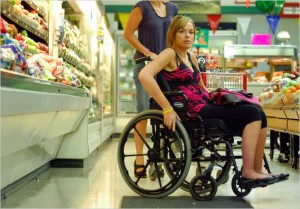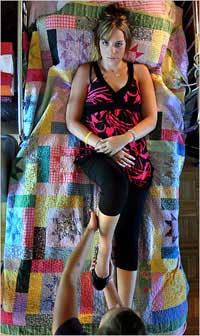Introduction to food safety
Food safety was far from dance instructor Stephanie Smith’s mind as she enjoyed the hamburger her mother prepared for dinner one fall Sunday in 2007. Yet over the next few days, Smith developed gradually worsening symptoms of an intestinal illness.
Five days after eating the hamburger, Smith became so incapacitated by pain that she was admitted to the hospital. Doctors had to put her in a coma for nine weeks to control her seizures. She survived, but the illness left her with severely damaged kidneys and unable to walk. As reported in a 2009 New York Times article, Smith continues to ask herself, “Why me?” and “Why from a hamburger?”
Smith had the great misfortune to eat a hamburger that had been contaminated with an especially virulent strain of Escherichia coli, identified scientifically as O157:H7, based on certain distinctive markers.
Health officials estimate that tens of thousands of people are sickened by E. coli O157:H7 each year. A small percentage of them develop a serious condition called hemolytic uremic syndrome, and a few have even more severe outcomes such as Smith’s. Most E. coli O157:H7 contamination occurs in ground beef, even though it has been illegal for companies and grocers to sell ground beef contaminated with this virulent strain since an outbreak in 2004 caused the deaths of four children. E. coli O157:H7 contamination has also been detected in other foods, such as fruit juice and lettuce.

FIGURE 1.1 Former children’s dance instructor Stephanie Smith became severely ill with an E. coli infection from tainted hamburger meat and, as a result, is now paralyzed.
The contaminated hamburger Smith ate that Sunday was sold by Cargill, an international producer and marketer of food products. However, Cargill did not produce the beef from which the frozen patties were made. Rather, the patties were prepared from meat products obtained from at least three slaughterhouses and from a company that processes fatty trimmings carved from better cuts of meat. By using these combined sources, Cargill was able to reduce their costs by about 25% from the cost of making hamburger patties from a single meat source. Some of the low-grade meat products used in the manufacture of hamburger patties come from parts of a cow that are more likely to be contaminated with feces, and, thus, are more likely to harbor E. coli O157:H7. Cargill did not test the various meats and trimmings for contamination before mixing them to make hamburger patties.
Thus, it was impossible for federal investigators to pinpoint the original source of the bacteria that sickened Smith and others.

Stephanie Smith, a 22-year-old former dance instructor, was left partly paralyzed two years ago by E. coli that officials traced to hamburger.
Continuing outbreaks of E. coli O157:H7 contamination have increased pressure on the U.S. Department of Agriculture and on the meatpacking industry to improve the safety of our food supply.
Additional guidelines for industry procedures and food inspections have been imposed, but food safety experts contend that much more is required to assure that food supplies are free of the contamination that had such a devastating effect on Stephanie Smith’s life.
###
Terry L. Smith
TERRY L. SMITH is a biostatistician and science writer who
lives in Lawrence, Kansas. She has an M.S. in biometry from the
University of Texas School of Public Health. Smith is the author of
numerous books and articles relating to human health, including
Asthma in Chelsea House’s Genes and Disease series.